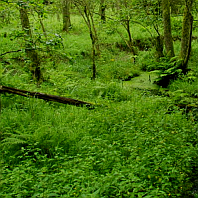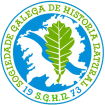Today we signed a contract with the Banco de Terras de Galicia (Bank of Galician Land), by which they rented us a 14,760 m2 plot located by the banks of the River Mendo, in the Oza-Cesuras Municipality.
With this agreement we finished some yearlong procedures during which we faced several difficulties. The first one was the legislation in force: when Fragas do Mandeo was founded, the law governing the Banco de Terras did not allow land plot cession to private entities dedicated to natural heritage conservation, even if they were non-profit and declared of Galician interest such as this one. Fortunately, the Lei de mobilidade de terras (Law of Land Mobility) was approved at the end of 2011, removing this obstacle, since it considered land stewardship and nature preservation among the purposes of the properties it manages. In December we informed Bantegal ―the managing entity at that time― about our interest in the land plot. After some meetings with the Director accompanied by other stewardship organizations, we were able to start the official procedures in April 2012.
At last, on May 14th, Agader ―the current managing entity― issued a positive resolution on the land plot cession and thus we were able to formalize one of the first agreements of land stewardship of this kind in Galicia. Now we have to show that stewardship entities deserve the changes made to Banco de Terras’ regulations.
The ceded land plot has considerable ecological value, as part of a riparian forest declared priority habitat. Apart from a great variety of trees such as alder, ash, willows, birches, oaks, chestnut trees or laurels, other threatened plants grow there, such as Narcissus asturiensis and several species of protected amphibians thrive in the soil moisture.
There are several areas that must be tackled. First, we need to remove litter because, as is often the case in public estates, many anti-social people have left all kinds of garbage. Secondly, we have to eliminate the invasive alien species, because crocosmias, buddleias, privets and robinias are growing there. Later on, when we have more time, we will have to undertake the cutting of several eucalyptuses and the improvement of the habitat for amphibians.
As you can see, there is a lot of work to do. If you want to be at the forefront of the rehabilitation of this natural area, please contact us. You can find all the necessary information in section Contact.



















